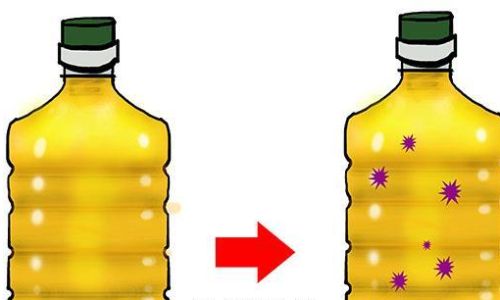Canola oil, derived from the seeds of the canola plant (Brassica napus), is one of the most widely used cooking oils globally. Renowned for its neutral flavor, high smoke point, and relatively low saturated fat content, it has become a staple in kitchens worldwide. However, like all edible oils, canola oil has a finite shelf life, and questions about its safety after expiration are common. This article delves into the science behind canola oil’s shelf life, the factors influencing its degradation, and whether consuming expired oil poses health risks. It also provides practical guidance on storage, spoilage signs, and alternative uses for aged oil.
Understanding Canola Oil’s Composition and Shelf Life
Canola oil is primarily composed of fatty acids, with approximately 61% monounsaturated fats (oleic acid), 21% polyunsaturated fats (linoleic and alpha-linolenic acids), and 7% saturated fats. These fatty acids contribute to its stability and nutritional profile. However, the presence of unsaturated fats makes canola oil susceptible to oxidation, a chemical process that breaks down the oil’s molecular structure over time.
The shelf life of unopened canola oil typically ranges from 18 to 24 months when stored under optimal conditions. Once opened, exposure to oxygen, light, and heat accelerates degradation, reducing its usable lifespan to about 6–12 months. The “best by” or “use by” date printed on the bottle serves as a manufacturer’s estimate of peak quality, not a strict safety deadline. This means the oil may remain safe to consume beyond this date, provided it has been stored correctly and shows no signs of spoilage.
Factors Affecting Canola Oil’s Longevity
Several environmental factors determine how quickly canola oil deteriorates:
- Light Exposure: Ultraviolet (UV) rays from sunlight or artificial light sources trigger photochemical reactions in the oil, leading to the formation of free radicals and off-flavors. This is why canola oil is often packaged in opaque or tinted bottles.
- Heat: High temperatures accelerate oxidation and hydrolysis, two processes that degrade the oil’s quality. Storing oil near stoves, ovens, or windows can shorten its shelf life.
- Oxygen: Air contains oxygen, which reacts with unsaturated fats in the oil, causing rancidity. Opened bottles are more vulnerable to this issue.
- Moisture: Even trace amounts of water can promote microbial growth or enzymatic reactions, though canola oil’s low water content makes this a less common concern compared to other oils.
- Impurities: Particles from previous uses, such as food residue, can act as catalysts for degradation.
Signs of Spoilage in Canola Oil
Determining whether expired canola oil is safe to consume requires a sensory evaluation. Key indicators of spoilage include:

- Rancid Odor: Fresh canola oil has a mild, almost neutral scent. Spoiled oil emits a sharp, bitter, or paint-like odor due to the release of volatile compounds like aldehydes and ketones.
- Off-Flavor: Rancid oil tastes stale, metallic, or acrid. This alteration in taste, while not always harmful in small quantities, diminishes the oil’s culinary appeal.
- Cloudiness or Sediment: While slight cloudiness in cold temperatures is normal (and reversible upon warming), persistent haziness or solid particles indicate degradation.
- Darkening Color: Over time, canola oil may darken from light yellow to amber, though this alone does not necessarily mean spoilage.
It is crucial to note that consuming rancid oil in moderation is unlikely to cause acute illness. However, chronic ingestion of oxidized fats has been linked to inflammation, oxidative stress, and an increased risk of chronic diseases like heart disease and cancer.
Health Risks of Consuming Expired Canola Oil
The primary concern with expired canola oil is rancidity, which occurs when oxygen breaks down the oil’s fatty acids into harmful byproducts. These include:
- Free Radicals: Unstable molecules that damage cells and DNA, potentially contributing to aging and disease.
- Peroxides: Compounds that can irritate the digestive tract and exacerbate inflammation.
- Hydroperoxides: Intermediates in the oxidation process that further degrade into toxic aldehydes.
While the human body can neutralize small amounts of these substances, prolonged exposure may overwhelm antioxidant defenses. Individuals with sensitive stomachs or compromised immune systems are more susceptible to adverse effects.
Proper Storage to Extend Shelf Life
To maximize canola oil’s freshness:
- Store in a Cool, Dark Place: Ideal temperatures range between 50–70°F (10–21°C). Avoid refrigerators, as condensation can introduce moisture.
- Use Airtight Containers: Transfer opened oil to smaller bottles to minimize air exposure. Dark glass or stainless steel containers offer better UV protection than clear plastic.
- Avoid Heat Sources: Keep oil away from stoves, ovens, and direct sunlight.
- Limit Oxygen Exposure: Purchase oil in quantities that align with usage patterns to reduce the time the bottle remains open.
Can You Still Use Expired Canola Oil?
The decision to consume expired canola oil hinges on three factors:

- Storage Conditions: Oil stored in a cool, dark, airtight environment is more likely to retain quality beyond its expiration date.
- Sensory Evaluation: If the oil smells and tastes normal, it is likely safe for cooking, though its nutritional value may have diminished.
- Intended Use: Expired oil with mild degradation can still be used for non-culinary purposes (see below).
However, if the oil exhibits signs of rancidity, it should be discarded. Using rancid oil for frying or high-heat cooking is particularly risky, as heat accelerates the release of harmful compounds.
Alternative Uses for Expired Canola Oil
Even if expired canola oil is no longer suitable for consumption, it can be repurposed:
- Lubricant: Apply a small amount to sticky hinges, tools, or garden equipment.
- Furniture Polish: Mix with vinegar to create a natural wood cleaner.
- Soap Making: Rancid oil can be incorporated into homemade soap recipes, where the lye neutralizes harmful compounds.
- Composting: Small amounts can be added to compost piles to deter pests.
- Pet Care: Some pet owners use expired oil (in moderation) to improve fur shine, though consult a veterinarian first.
Debunking Myths About Expired Oils
- “Expired Oil is Toxic”: While rancid oil contains harmful byproducts, acute poisoning is rare. The risk lies in long-term consumption.
- “Refrigeration Extends Shelf Life Indefinitely”: Refrigeration slows degradation but does not halt it. Condensation and flavor absorption from other foods are additional concerns.
- “All Expired Oils Are the Same”: Different oils have varying levels of stability. Canola oil, with its moderate unsaturated fat content, degrades faster than saturated fats like coconut oil but slower than polyunsaturated oils like flaxseed oil.
Scientific Perspective on Oil Stability
Research indicates that the oxidation stability index (OSI) of canola oil, which measures resistance to degradation, is influenced by its fatty acid composition and processing methods. Cold-pressed, unrefined canola oil has a shorter shelf life due to higher levels of heat-sensitive nutrients, while refined oils undergo processes like bleaching and deodorizing to extend longevity.
A 2020 study published in the Journal of the American Oil Chemists’ Society found that canola oil stored at 65°F (18°C) in dark glass bottles retained acceptable quality for up to 18 months post-expiration. However, samples stored at higher temperatures or exposed to light showed significant deterioration within six months.
Conclusion: Balancing Safety and Sustainability
Canola oil, like all perishable goods, has a limited lifespan. While expired oil is not inherently dangerous if stored properly and free from spoilage signs, its quality—and nutritional benefits—decline over time. Consumers should prioritize purchasing realistic quantities, adhering to storage guidelines, and conducting regular sensory checks. In cases of doubt, erring on the side of caution is advisable.

For environmentally conscious individuals, repurposing expired oil reduces waste and offers practical solutions for household maintenance. By understanding the science behind oil degradation, consumers can make informed choices that prioritize both health and sustainability.
In summary, expired canola oil may still be safe to consume if it shows no signs of rancidity and has been stored correctly. However, monitoring its condition and using alternative disposal methods when necessary ensures a balance between frugality and well-being.





0 comments